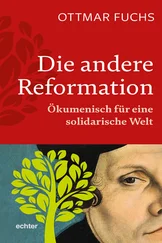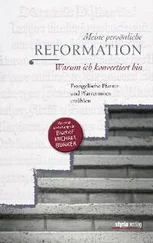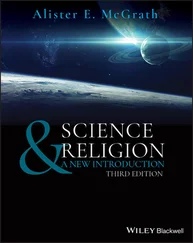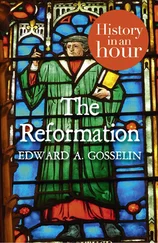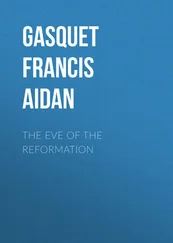1 ...6 7 8 10 11 12 ...20 In Germany, there was a protracted struggle between evangelical and Catholic writers and ecclesiastics during the 1530s, as each attempted to gain influence in a disputed region, and define its distinct identity. The situation in Germany became even more complicated during the 1560s and 1570s, as Calvinism began to make major inroads into previously Lutheran territory. Three major Christian denominations were now firmly established in the same area – Lutheranism, the Reformed churches, and Catholicism. All three were under major pressure to identify themselves. Lutherans were obliged to explain how they differed from Calvinists on the one hand and Catholics on the other. And doctrine proved the most reliable way of identifying and explaining these differences: “we believe this , but they believe that .”
The period 1559–1622, characterized by a new emphasis on the need for purity of doctrine, is generally referred to as the “period of orthodoxy.” Lutheran, Reformed, and Catholic churches found it necessary to define and defend themselves theologically , a process which inevitably led to the construction of theological definitions of identity. For example, the doctrine of double predestination (pp. 240–1) came to be a boundary marker between the Lutheran and Reformed churches.
The situation in England from 1530 onward was very different. Henry VIII simply declared that there would be only one national church within his realm. By royal command, there would be a single Christian body in England, with the monarch as its head or “supreme governor.” In the absence of any other viable Christian body within the realm of England, the reformed English church was under no pressure to justify or define itself in relation to any other Christian body in the region. The Act of Uniformity ensured that there was only one national church, whose unity was symbolized and maintained by the monarch as its “supreme governor.”
The manner in which the English Reformation initially proceeded under Henry VIII thus did not make doctrinal self-definition necessary, in that the church in England was defined socially in precisely the same way before the Reformation as after – whatever alterations may have been introduced. This is not to say that no theological debates took place in England at the time of the Reformation; it is simply to note that they were not regarded as fundamental to establishing the identity of the English national church.
The situation remained much the same under Elizabeth I. The Elizabethan “Settlement of Religion” (1559) laid down that there would be only one Christian church in England – the Church of England, which retained the religious monopoly of the pre-Reformation church, while recognizing royal, rather than papal, supremacy. The phrase “Church of England,” as defined legally in Halsbury’s Laws of England , makes no reference to its doctrine: the “Church of England” is regarded as continuous with the church established in England during the period 597–686. Catholicism, Lutheranism, and Calvinism – the three Christian churches fighting it out for dominance of the continent of Europe – would not be permitted to operate in England.
The social pressures which made religious ideas so important in the German context never really developed during the period of the English Reformation. There was thus no particular reason for the Church of England to pay much attention to doctrinal questions. Elizabeth ensured that it had no rivals in England. One of the purposes of doctrine is to divide – and there was nothing for the Church of England to divide itself from. England was insulated from the factors which made doctrine so significant a matter on the mainland of Europe in the Reformation and immediate post-Reformation periods.
Indeed, the need to ensure that all English Christians (whether personally inclined toward some form of Protestantism or toward Catholicism) felt reasonably at home in the Church of England led to the necessity of doctrine being played down: an emphasis on doctrine might lead to divisions within the new church, and hence internal weakness at a time when English faced significant external threats. As Elizabeth tried to ensure England’s safety in the dangerous world of the late sixteenth century, the last thing she wanted was an England torn apart by doctrinal differences. A divided English church would mean a divided England; and a divided England would be a weak and vulnerable England.
The social context of the Reformation thus has a significant influence on the extent to which religious ideas affected events. In Germany, such ideas proved to be enormously important; in England, their influence appears to have been of less significance. Many scholars suggest that the rise of Puritanism as a significant religious and political force in England toward the end of the sixteenth century led to specifically theological issues being given a high profile in discussions of the shape and identity of the English church.
From what has been said thus far, it will be clear that the “Age of Reformation” was not homogenous, but involved a complex pattern of interactions between leading reformers, local concerns and opportunities, and local rulers – whether these took the form of monarchs or city councils. These issues will be explored in greater detail as this analysis proceeds in later chapters. In what follows, we shall present an overview of the factors that led so many to conclude that some kind of reform was needed in the early 1500s. While there was divergence on precisely what needed to be reformed, and who ought to carry out such reformations, there was widespread agreement that something needed to be done.
By the beginning of the sixteenth century, it was obvious that the church in western Europe was in urgent need of “reform of head and members.” It seemed to many that the life-blood of the church had ceased to flow through its veins. The church legal system was badly in need of overhaul, and ecclesiastical bureaucracy had become notoriously inefficient and corrupt. The morals of the clergy were often lax and a source of scandal to their congregations. Clergy, even at the highest level, were frequently absent from their parishes. In Germany, it is reported that only one parish in fourteen had its pastor in residence. The Frenchman Antoine du Prat, archbishop of Sens, turned up for only one service at his cathedral throughout his ten years in the archdiocese: moreover, his presence and role at this service were somewhat passive, in that it was his funeral.
Many senior ecclesiastical posts were secured through questionable means on dubious grounds, generally relying upon the family connections or the political or financial status of the candidates, rather than their spiritual qualities. Thus, Duke Amadeus VIII of Savoy secured the appointment of his son to the senior position of bishop of Geneva in 1451; if anyone had misgivings about the fact that the new bishop had never been ordained and was only eight years of age, they were wise enough not to mention them in public. Pope Alexander VI, a member of the Borgia family (famous for its lethal dinner parties), secured his election to the papacy in 1492 despite having several mistresses and seven children, largely because he bought the papacy outright over the heads of his nearest rivals. Niccolò Machiavelli put the loose morals of late Renaissance Italy down to the poor example set by the church and its clergy.
The Growth of Anti-Clericalism
Perhaps unsurprisingly, anti-clericalism became a significant phenomenon in the late Middle Ages, reflecting a number of social concerns about the elevated social status and unimpressive intellectual caliber of the clergy. The tax breaks enjoyed by clergy were the source of particular irritation, especially in times of economic difficulty. In the French diocese of Meaux, there was considerable local resentment because the clergy were exempted from all forms of taxation. In the diocese of Rouen, there was popular outcry over the windfall profits made by the church by selling grain during a period of severe shortage. Irritated by the low intellectual stature of many parish clergy in the early sixteenth century, an increasingly educated Christian laity turned to writers such as Erasmus of Rotterdam (Figure 1.1) to find an intelligent articulation of their faith.
Читать дальше
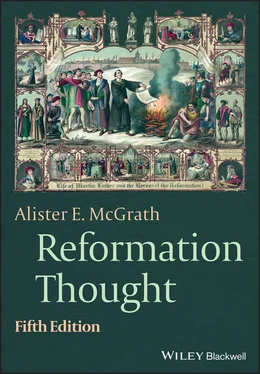
![О Генри - Возрождение Каллиопы [The Reformation of Calliope]](/books/407342/o-genri-vozrozhdenie-kalliopy-the-reformation-of-c-thumb.webp)

